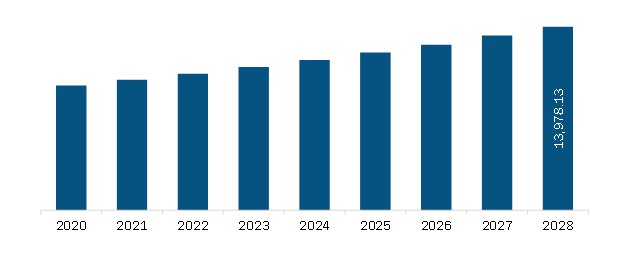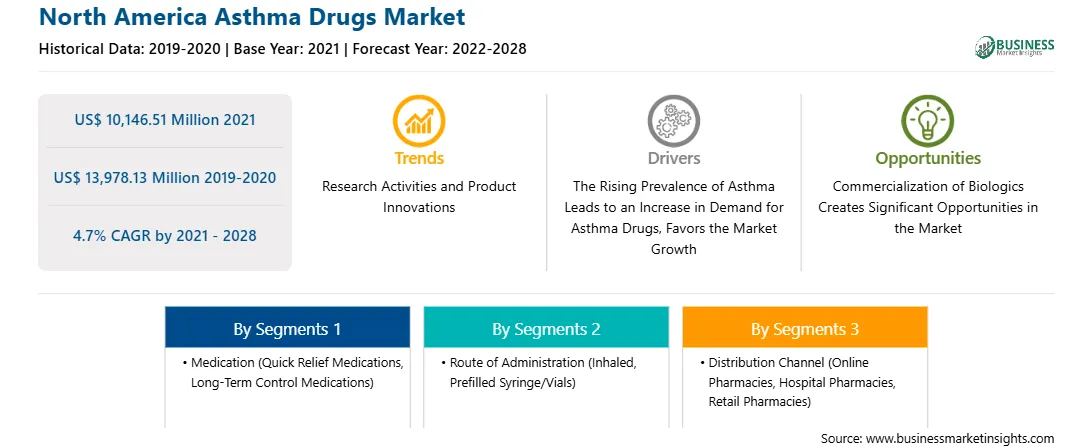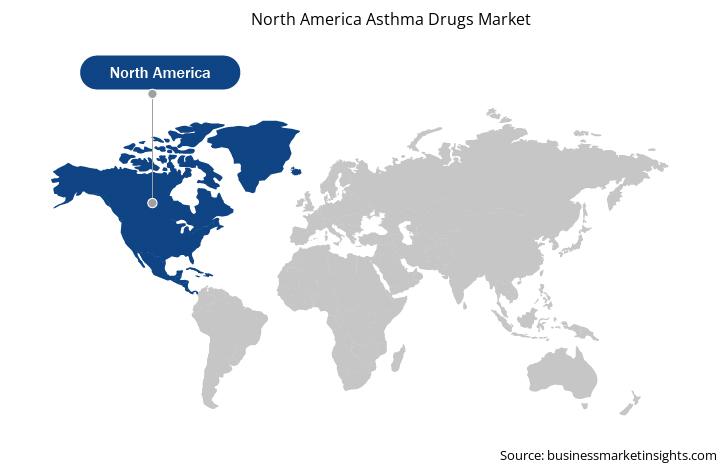The growth of the market is attributed to the rising prevalence of asthma and the growing exposure to coarse particulate matters. However, the unmet medical needs hamper the market growth.
According to a 2018 study titled “Low-level ozone has both respiratory and systemic effects in African American adolescents with asthma despite asthma controller therapy”, low levels of outdoor ozone were linked to respiratory abnormalities and other outcomes in African American children with difficult-to-treat asthma, even when they were using asthma medications, such as inhalers, to mitigate the harmful effects of air pollutants.
The Environmental Protection Agency (EPA) cooperated with researchers at the University of North Carolina at Chapel Hill to investigate the effects of ozone on the health of African American children with moderate-to-severe persistent asthma in Raleigh, North Carolina. The findings show that ozone levels below the National Ambient Air Quality Standard (NAAQS) were linked to pulmonary and other alterations in African American children with persistent asthma.
The American Lung Association Epidemiology and Statistics Unit through the CDC’s data showcased that Puerto Ricans in the US had the highest asthma rates at 14%, followed by African Americans at 11% and Non-Latino whites at 8%. This substantiates the fact that various ethnic groups are at a higher risk of asthma, which is driving the demand for asthma drugs in North America.
Furthermore, researchers discovered that even at low ozone levels and when the individuals took asthma medication, an increase in ozone concentrations was linked to a deterioration in lung function. They also discovered that ozone exposure was linked to a rise in the number of fatty compounds in the blood, previously observed only in adults. The study showed that even at low concentrations, ozone can impact vulnerable populations, and the effect is more extensive than merely respiratory outcomes.
The higher risks and vulnerabilities found in ethnic groups, especially Puerto Ricans and African Americans, propel the demand for asthma drugs for locations with higher density of these ethnic groups.

Strategic insights for the North America Asthma Drugs provides data-driven analysis of the industry landscape, including current trends, key players, and regional nuances. These insights offer actionable recommendations, enabling readers to differentiate themselves from competitors by identifying untapped segments or developing unique value propositions. Leveraging data analytics, these insights help industry players anticipate the market shifts, whether investors, manufacturers, or other stakeholders. A future-oriented perspective is essential, helping stakeholders anticipate market shifts and position themselves for long-term success in this dynamic region. Ultimately, effective strategic insights empower readers to make informed decisions that drive profitability and achieve their business objectives within the market.

| Report Attribute | Details |
|---|---|
| Market size in 2021 | US$ 10,146.51 Million |
| Market Size by 2028 | US$ 13,978.13 Million |
| CAGR (2021 - 2028) | 4.7% |
| Historical Data | 2019-2020 |
| Forecast period | 2022-2028 |
| Segments Covered |
By Medication
|
| Regions and Countries Covered | North America
|
| Market leaders and key company profiles |
|
The geographic scope of the North America Asthma Drugs refers to the specific areas in which a business operates and competes. Understanding local distinctions, such as diverse consumer preferences (e.g., demand for specific plug types or battery backup durations), varying economic conditions, and regulatory environments, is crucial for tailoring strategies to specific markets. Businesses can expand their reach by identifying underserved areas or adapting their offerings to meet local demands. A clear market focus allows for more effective resource allocation, targeted marketing campaigns, and better positioning against local competitors, ultimately driving growth in those targeted areas.

North America Asthma Drugs Market Segmentation
The North America asthma drugs market, by medication, is segmented into quick relief medications and long-term control medications. Based on route of administration, the market is segmented into inhaled, prefilled syringe/vials, and others. Based on distribution channel, the North America asthma drugs market is segmented into online pharmacies, hospital pharmacies, and retail pharmacies. By country, the market is segmented into the US, Canada, and Mexico.
AstraZeneca; TEVA PHARMACEUTICAL INDUSTRIES LTD;
Boehringer Ingelheim International GmbH; GlaxoSmithKline plc.; Merck & Co., Inc.; Koninklijke Philips N.V.; Sanofi;
Pfizer Inc. (Arena Pharmaceutical GmbH); Novartis AG; and Abbott are among the leading companies operating in the North America asthma drugs market.
The North America Asthma Drugs Market is valued at US$ 10,146.51 Million in 2021, it is projected to reach US$ 13,978.13 Million by 2028.
As per our report North America Asthma Drugs Market, the market size is valued at US$ 10,146.51 Million in 2021, projecting it to reach US$ 13,978.13 Million by 2028. This translates to a CAGR of approximately 4.7% during the forecast period.
The North America Asthma Drugs Market report typically cover these key segments-
The historic period, base year, and forecast period can vary slightly depending on the specific market research report. However, for the North America Asthma Drugs Market report:
The North America Asthma Drugs Market is populated by several key players, each contributing to its growth and innovation. Some of the major players include:
The North America Asthma Drugs Market report is valuable for diverse stakeholders, including:
Essentially, anyone involved in or considering involvement in the North America Asthma Drugs Market value chain can benefit from the information contained in a comprehensive market report.